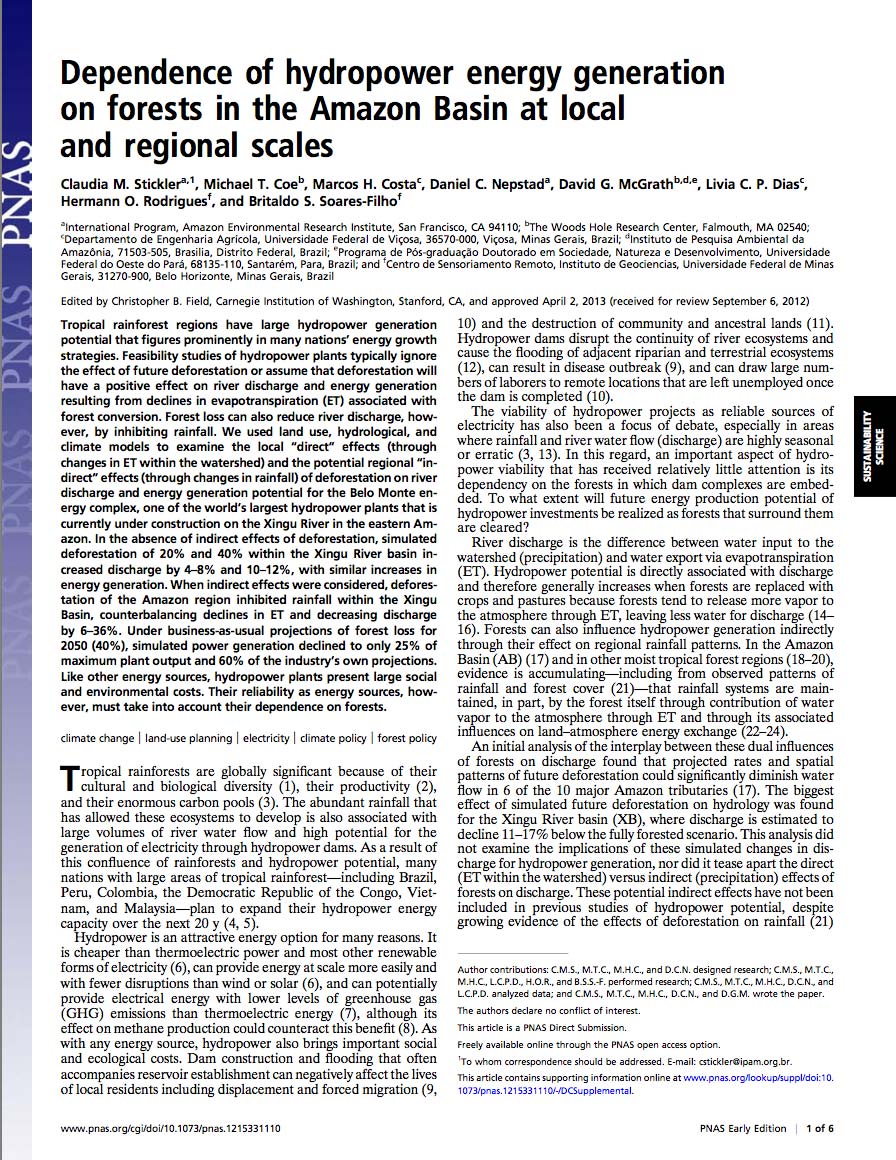PUBLICATIONS
2013
Apr
Feasibility studies of hydropower plants typically ignore the effect of future deforestation or assume that deforestation will have a positive effect on river discharge and energy generation resulting from declines in evapotranspiration (ET) associated with forest conversion. Forest loss can also reduce river discharge, how- ever, by inhibiting rainfall. We used land use, hydrological, and climate models to examine the local “direct” effects (through changes in ET within the watershed) and the potential regional “in- direct” effects (through changes in rainfall) of deforestation on river discharge and energy generation potential for the Belo Monte energy complex, one of the world’s largest hydropower plants that is currently under construction on the Xingu River in the eastern Amazon. In the absence of indirect effects of deforestation, simulated deforestation of 20% and 40% within the Xingu River basin in- creased discharge by 4–8% and 10–12%, with similar increases in energy generation. When indirect effects were considered, deforestation of the Amazon region inhibited rainfall within the Xingu Basin, counterbalancing declines in ET and decreasing discharge by 6–36%. Under business-as-usual projections of forest loss for 2050 (40%), simulated power generation declined to only 25% of maximum plant output and 60% of the industry’s own projections. Like other energy sources, hydropower plants present large social and environmental costs. Their reliability as energy sources, how- ever, must take into account their dependence on forests.

